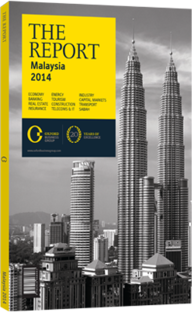Tip-top shape: Regional growth offers the potential to expand the shipping industry
With Asia now playing a key role within the global economy, Malaysia is looking to capitalise on trade expansion by bolstering its shipping industry in a bid to meet the growing needs of both itself and its neighbours.
Led by manufacturing and offshore oil and gas activity across the region, demand for maritime services is only set to increase, providing substantial opportunities for a wide spectrum of activities within the sector including vessel construction, merchant shipping, port operation, offshore oil and gas services, scrap yards and repair, conversion and maintenance facilities.
Niche
Guided by the Malaysian Shipbuilding/Ship Repair Industry Strategic Plan 2020 (SBSR 2020), launched by the Association of Marine Industries of Malaysia and the Malaysian Industry Government Group for High Technology (MIGHT) in 2011, the sector occupies a key niche in the state’s developmental plans, serving as an entry point project (EPP) under the Economic Transformation Programme. In establishing Malaysia as a key maritime player, the government is looking to attain an 80% market share in the local new-build market and 2% of the global new-build market, while focusing mostly on niche areas for vessels less than 120 metres in length, according to the SBSR 2020. On a more local level the plan also outlines objectives to capture 3% of the repair market for vessels plying the Strait of Malacca, as well as 80% of the South China Sea offshore repair market. These targets would entail a 10% expansion in value and 6% rise in manpower over the decade, leading to revenues of RM19.09bn ($5.96bn) and the creation of 25,000 jobs by 2020.
Closer To Home
Shipbuilding has so far concentrated mostly on littoral vessels, which account for at least three quarters of builds each year, with a smaller amount of offshore vessels (OSV) also built. A handful of large, capital-intensive blue water ships round out annual production such as container, tanker, bulker ships, as well as passenger and other assorted vessels.
While exports have remained static in recent years, averaging between RM1.25bn ($390m) and RM1.3bn ($405.7m) each year since 2007, growing production and technological capacity has enabled the industry to take on a larger role in serving the local market.
According to the most recent data available from MIGHT, the shipbuilding/ship repair sector generated revenues of RM7.34bn ($2.29bn) in 2012, up from RM7bn ($2.18bn) in 2011, and roughly equivalent to 2010 levels. Of the 2012 total, 60% of cash was taken in from shipbuilding activities, or RM4.4bn ($1.37bn), followed by ship repair activity, which accounted for another 23%, or RM1.7bn ($530.5m). Marine equipment and product manufacturing, meanwhile, made up another 16% of revenue worth RM1.2bn ($374.5m). The remaining RM4m ($1.25bn) was divided among other smaller operations including building and equipment rentals, transportation service and consultation.
Aiming For Recovery
Shipbuilding has tailed off since its peak in 2009 when more than 300 vessels were commissioned in the country. This number fell to 275 in 2011, and further still in 2012, with 248 vessels launched at a combined gross registered tonnage (GRT) of more than 200,000. Of the 2012 total, 77% of all new vessels were built in either Miri or Sibu, with 45% of all production exported. The top-five export destinations are the UAE, Papua New Guinea, Singapore, Indonesia and Australia, with ASEAN countries making up more than 80% of the market. A workforce of 33,000 employees carried out these tasks in 2012, led by skilled workers which accounted for 45% of the sector’s labour force, followed by general labourers (32%), technicians (14%), engineers (8%) and naval architects (1%).
The success of the shipbuilding industry has not only provided Malaysia with another valuable export commodity, but has also served as an import replacement product as well. Notwithstanding, while the country’s capabilities have increased, the GRT for imports fell from 2.5m tonnes in 2007 to 500,000 tonnes in 2012. Ship imports have dropped from RM6.58bn ($2.05bn) in 2007 to a low of RM1.88bn ($586.7m) in 2011, before recovering slightly to RM3.56bn ($1.11bn) in 2012.
You have reached the limit of premium articles you can view for free.
Choose from the options below to purchase print or digital editions of our Reports. You can also purchase a website subscription giving you unlimited access to all of our Reports online for 12 months.
If you have already purchased this Report or have a website subscription, please login to continue.

